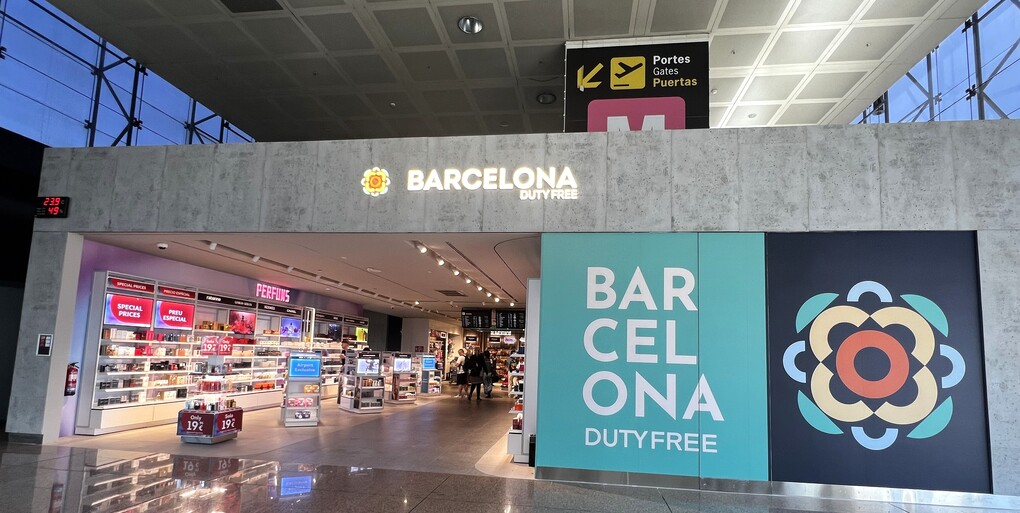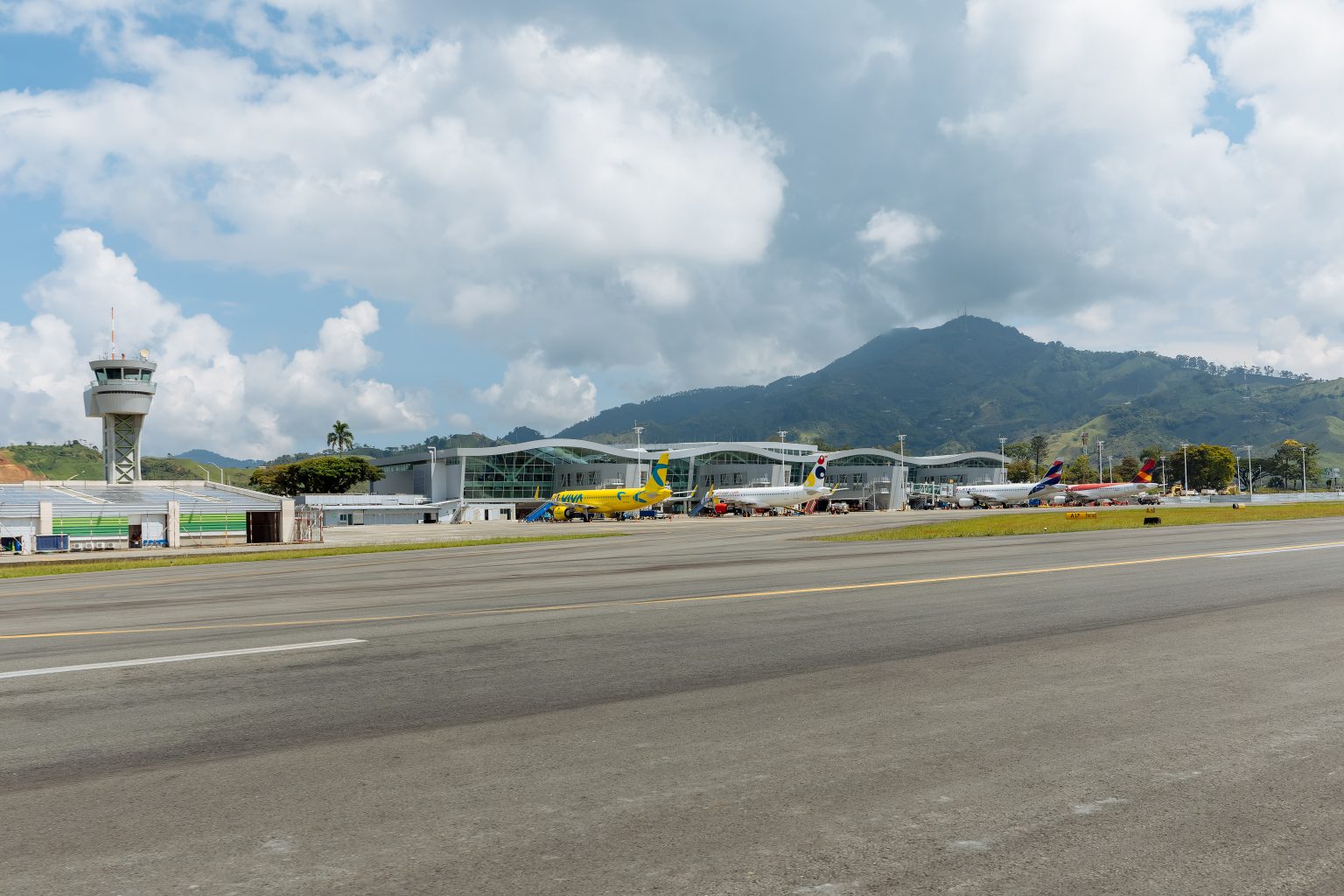| A wonder of the airport world This article forms part of a series on Abu Dhabi International Airport’s magnificent new Terminal A, which began operations on 1 November. The Moodie Davitt Report Founder & Chairman Martin Moodie visited the terminal in late November both on a guided basis and separately as an unencumbered passenger. His interviews with key stakeholders, including Abu Dhabi Airports leadership and management, concessionaires and designers, will be published over coming days and weeks. These will culminate in an exclusive eZine post the 9 February 2024 official inauguration, designed to capture the enthralling narrative of this extraordinary project. |
We continue our series on the new Abu Dhabi International Airport Terminal A with an exclusive interview with the woman who drove the project to fruition.
UAE. Prepare to be amazed. That’s the message from Abu Dhabi Airports Managing Director and Interim Chief Executive Officer Elena Sorlini, a youthful veteran of more than 18 years’ experience in the aviation industry, who drove the Abu Dhabi International Airport Terminal A project with huge determination and tenacity to ensure the 1 November opening deadline was hit.
Reaction since has been hugely encouraging, Sorlini says as we chat over morning coffee in Terminal A alongside members of her leadership team.
“It is amazing what we have received in terms of feedback from multiple countries. The pride in this project is huge. I have spent quite a lot of my career in Europe but there has been nothing like this.”
Sorlini is particularly enthusiastic about the sheer spectacle of the building. “The visibility you have… you can see almost everything from anywhere,” she says. “It’s beautiful, wherever you’re looking from it’s really impressive. Pretty amazing, right?”
The question demands no rebuttal. The X-shaped Terminal A is an amazing feat of engineering, its combination of scale, grandeur and beauty complemented by copious natural light and superb internal visibility.
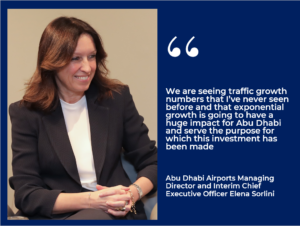
But the end result did not come easily, with the long-delayed project having faced huge challenges on multiple levels. “It was complexity over complexity,” Sorlini says. “It was a good call that we decided to do a phased transition. It all went well and it was one of the best openings in the industry over recent years. So we are all very happy.”
Abu Dhabi Airports Vice President Customer Experience & Relationship Management Muna AlGhanim pays tribute to Sorlini’s qualities over those testing months. “She has been amazing. She’s very passionate about this. It’s in her blood. Every day she comes in with this excitement that she wants everything to be perfect. She wants to please the passenger and to bring Abu Dhabi Airport to a new level. We all believe this is for the benefit of Abu Dhabi.”
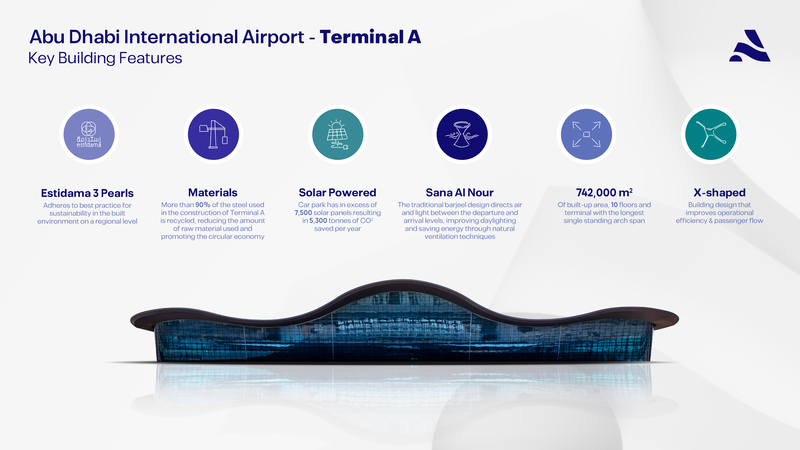
The phased launch Sorlini refers to saw national carrier Etihad Airways’ ceremonial flight take place on 31 October ahead of the public opening a day later. Other carriers, including Wizz Air Abu Dhabi and 14 international airlines, transitioned to Terminal A in three phases, culminating in all 28 airlines being operational from the new facility on 14 November.
“We have one of the best buildings, I would say, of any airport in the world,” Sorlini says. “And we want to create a passenger experience matching exactly to that status. So operations, of course, are critical. We don’t want the passengers to feel any pain, it needs to be a smooth journey.”
Biometrics (a process by which a passenger is uniquely identified by evaluating one or more distinguishing biological traits, see image below) are key to delivering the goal of a seamless kerb-to-gate experience.
“Eighteen months ago, we started working immediately on the digital and biometrics solutions to minimise the pain of the passenger,” Sorlini says.
“The good thing is that we got the support from all the stakeholders around the airport, which makes things that much easier again. That’s an asset in itself which we are also going to utilise in the future.”
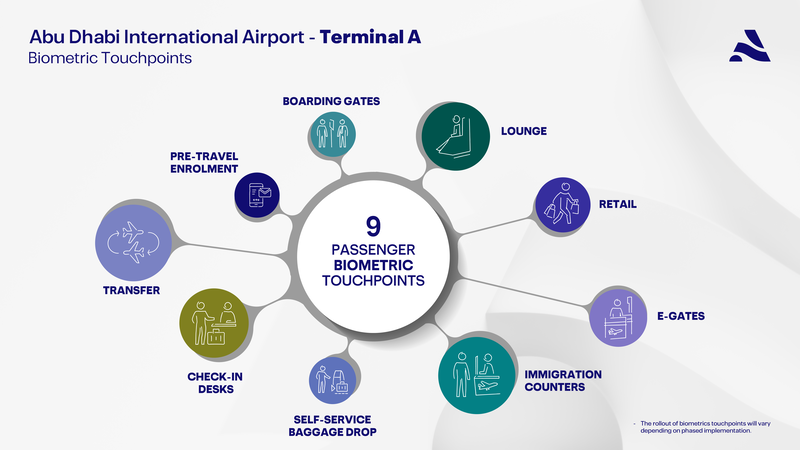
Phase one has seen biometric solutions installed in five key areas, including self-service bag drops, immigration eGates and boarding gates. When fully operational, it will use facial-recognition technology to screen passengers and minimise wait times. Such technology is complemented by other hi-tech facilities including an advanced baggage handling system capable of processing up to 19,200 pieces per hour.
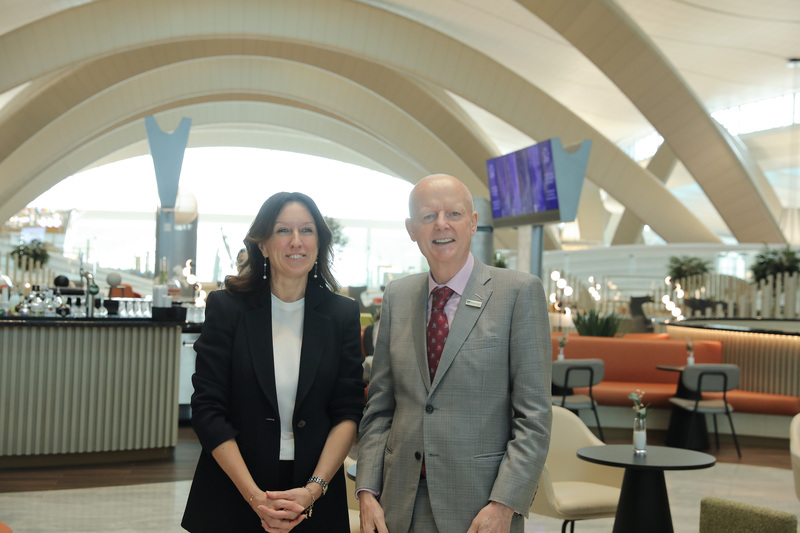
An increase to 65 parking stands connecting aircraft with allocated boarding gates also spells less congestion, a more relaxed boarding experience and smoother onward journey.
“I believe we have achieved something amazing,” Sorlini concludes. “I had the honour to lead the last part of the journey, in a way, because I was sitting on the board before and I was fully involved. And I have to say, I fell in love with the building the first time I saw it. This is something very special, a very special place.
“I think it is going to be very important for Abu Dhabi, not just for the elemental pride but because it is going to unlock the potential of the very competitive advantage we have here in terms of the product that we can offer.
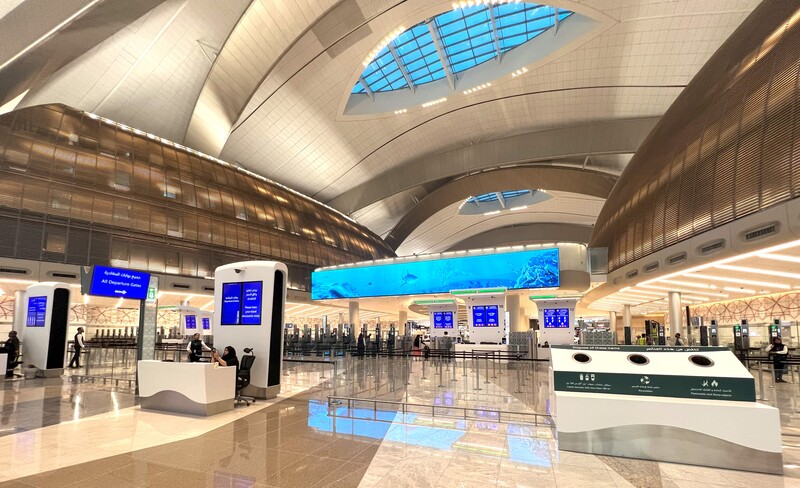
Q3 passenger traffic boomPrior to the boost to capacity offered by Terminal A, Abu Dhabi International Airport posted an encouraging +29.3% year-on-year increase in passenger traffic for its third quarter ended 30 September to 5,951,025. Flight movements rose +21.8% to 37,903 Abu Dhabi’s connectivity also expanded significantly, with 119 destinations served from Abu Dhabi International Airport by 24 airlines. The busiest in the quarter included London (238,196 passengers), Mumbai (228,189) Kochi (191,883), Cairo (172,570) and Doha (168,417 passengers). Abu Dhabi Airports Managing Director and Interim Chief Executive Officer Elena Sorlini commented: “We are happy to report passenger figures that continue to show double-digit growth for both passengers and movements. “We are attracting major international airlines to Abu Dhabi, with Air France and SunExpress all scheduled to start this IATA Winter season, and we further welcome British Airways’ recent announcement to return to Abu Dhabi in April 2024. “Terminal A brings a host of new capabilities and facilities, and will be key to airline and, consequently, passenger growth.” |
“We have a lot of competition around us and we want to bring people to stay in Abu Dhabi. The transfer element is important of course and we are fully supported by our home carrier, but I think it is important to understand that 50% of the traffic here is point to point, which is a quite high rate compared to any hub that we have around us.
“We are seeing traffic growth numbers that I’ve never seen before (see panel, right)… and that exponential growth is going to have a huge impact for Abu Dhabi and serve the purpose for which this investment has been made.
“Etihad has gone through a restructuring phase and is now growing again… but we have also attracted many new airlines. Some have come back after a couple of years from pre-COVID but we have also new airlines. So all in all we are very satisfied.”
That’s all a far cry from May 2021 when Sorlini joined Abu Dhabi Airports as a board member, having become Investment Director Aviation at ADQ, a shareholder in the airport, two months earlier.
“When I joined [ADQ] we had 1 million passengers going through the airport in Q1 2021; Etihad under a painful restructuring and struggling like many other airlines, and we had a lot of things to fix, including the Midfield Terminal (now Terminal A) of course. So I was looking at the challenges ahead and saying, ‘OK, this is going to be interesting!’
“And now, looking backwards, we have 22 million pax this year, which is going to be more than what we had in in 2019 – about 8 to 10% above, we are forecasting. So we’ve fully recovered the gap and we are looking at a substantial increase next year.
“The good news is that traffic is coming both with O&D [origin and destination] and low-cost airlines so we can feel the shoulders and hence we can space the traffic more evenly,” says Sorlini.
The rapidly restoring fortunes of Etihad Airways are pivotal to such optimism. In May the airline’s Chief Executive Antonoaldo Neves told local media title The National that the airline aims to triple passenger numbers to 30 million from 10 million in 2022 (and a projected 13 million this year) and double its fleet to 150 planes by 2030. The “next chapter of growth”, he pledged, would be boosted by the opening of Terminal A.
As an engaging conversation draws to a close, I suggest to Sorlini that Terminal A stands as a symbol – and a magnificent one at that – of the end of a dark, pandemic-ravaged period in local and global aviation.
“We have achieved really good results; Etihad is profitable now – it’s going to deliver a huge engine of growth again. So looking backwards, a lot has been done and the COVID times seem like a very remote nightmare,” she replies. “So, yes, Terminal A is a symbol of the renaissance of the aviation sector in Abu Dhabi.” ✈
PREVIOUS STORIES IN OUR TERMINAL A SERIES
A close encounter with Abu Dhabi’s wonder of the airport world
Butlers Chocolate Café offers retail and dining treats at Abu Dhabi International Airport Terminal A











